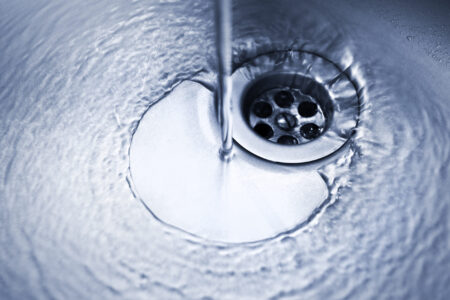Drain clogs happen when debris, including food particles, soap scum, grease, and hair, accumulates in your home’s pipes. A clog blocks the proper flow of water, which can happen in any drain, from sewer lines and toilets to showers and sinks. Ignoring a clog might result in slow drainage, water backups, and unpleasant odors or result in water damage to your home.
If left untreated, a minor clog can turn into a larger blockage that’s more expensive and difficult to remove. Promptly dealing with clogs maintains an operational plumbing system, prevents damage, and keeps your home functional and healthy. You can do a few things for basic clog removal, but they don’t always work. You should know when to consult a plumber and the 10 ways they can unclog drains.
1. Plunging
Plunging can be the first line of defense against minor clogs, and plunging can be a very effective tool in a professional’s toolkit. A high-caliber plunger can create the suction and pressure necessary to dislodge minor clogs in toilets, showers, and sinks. Unlike typical home plungers, professional models have heavy-duty construction to deliver more force. That lets plumbers clear a stubborn clog in mere seconds. Plunging is often effective on minor blockages, but more severe clogs need more elaborate methods.
2. Drain Snakes or Augers
Clogs that are beyond the reach of a plunger will make your plumber dig deeper into his kit, probably pulling out an auger or drain snake. They will insert a flexible cable into the drain and then maneuver it through the pipe until it contacts the clog. When it reaches the obstruction, your plumber will twist and turn the tool to either break the clog up or pull it out. Different kinds of snakes are used based on the kind of blockage. Hand augers might work on small clogs, but electric augers are a better choice for more challenging obstructions.
3. Hydro-Jetting
Hydro-jetting is a highly effective method for clearing stubborn clogs caused by grease, hair, and other debris. This technique uses high-pressure water, sometimes exceeding 3,500 PSI, to blast through tough blockages while also cleaning years of built-up grime from the inside of your pipes. It’s particularly useful for severe clogs in larger pipes and is an excellent solution for recurring blockages that don’t respond to other methods. However, due to the intense pressure, hydro-jetting requires professional expertise to ensure it doesn’t damage your plumbing.
4. Chemical Drain Cleaners
While chemical drain cleaners are often available for DIY use, they can be harsh on your home’s pipes and may cause damage over time. Professionals, on the other hand, have access to industrial-grade cleaners that are much stronger than retail products. However, plumbers typically reserve these powerful solutions for specific clogs, such as those caused by hair, soap buildup, or grease, and only use them when absolutely necessary. Due to the potential safety risks and the possibility of pipe damage, chemical drain cleaners are rarely a plumber’s first choice for clearing blockages.
5. Video Camera Inspection
Plumbers may use a video camera inspection to look inside your pipes for clogs that keep coming back or are difficult to pinpoint. This involves inserting a small, flexible camera attached to a cable, which provides real-time video feedback. This inspection helps the plumber accurately determine the blockage’s size, location, and cause, as well as identify any issues with the pipes. The use of a video camera is advantageous because it eliminates the need to tear up walls or floors to locate the problem, making it ideal for diagnosing multiple clogs or more complex drain issues. Contact us for leak detection today!
6. Pipe Cleaning Bladders
Pipe cleaning bladders, also known as expansion bladders, are an effective tool for clearing certain types of clogs. A plumber attaches the bladder to a garden hose and inserts it into the blocked drain. As water flows into the bladder, it expands to create a tight seal within the pipe. The bladder has a small opening at its end, which allows water to shoot out under high pressure. This powerful jet of water is directed forward, breaking up and flushing away the clog. This method is beneficial for clearing stubborn mid-level blockages and main sewer line clogs.
7. Rooter Service
Plant roots can invade underground pipes, causing blockages, particularly in older lines or properties with large trees. Rooter service uses specialized tools with rotating blades to cut through roots and clear the pipe, restoring proper drainage in the sewer line. After clearing the pipe, a plumber will usually conduct a video inspection to identify any further issues that need to be addressed.
8. Air Burst Drain Cleaners
Air burst drain cleaners use pressurized air or carbon dioxide to clear clogs by releasing powerful bursts of energy that push the blockage through the pipe. This method is particularly effective for smaller clogs near the drain entrance. However, if the blockage is more stubborn or further down the pipe, air burst cleaning is often combined with other tools or techniques for a more thorough solution.
9. Manual Removal
In some cases, plumbers may perform manual removal to clear a clog, especially near the drain entrance. They can access the trap using specialized tools, such as the U-shaped pipe under sinks, to physically remove debris causing the blockage. This method is used for removing items that can’t be pushed through your pipes or dissolved, like toys. They may also use this technique when the item is something you want back, such as jewelry. Manual removal is also often necessary when dealing with clogs that are too stubborn for other techniques.
10. Pipe Section Replacement
In some cases, a clog is the result of a damaged pipe. When this happens, your plumber will need to replace the affected section of your plumbing. This process is invasive because they will likely have to make holes in your flooring or walls to access the damaged pipe. However, replacing the damaged section is necessary to restore proper drainage and prevent further issues, such as water damage or ongoing blockages.
How You Know You Need a Professional for a Clog
You might be able to manage minor clogs in your toilet with a plunger. Retail chemical options might work in sinks. However, these options don’t always work or yield partial results. If you’re dealing with water pooling where it shouldn’t be, unpleasant odors coming from your drains, slow drainage, or repeated backups, it’s time to call a plumber. Multiple clogged drains are particularly concerning since they can signal a more serious issue with your sewer line. A professional can effectively clear stubborn clogs without damaging your pipes, saving you from costly repairs in the future.
Contact Your Local Experts
At [company_name], we have served the residents in Jerome, ID and the surrounding areas since 2013. In addition to drain cleaning, we install, repair, and maintain heating and cooling systems. You can also count on us for all your indoor air quality and electrical needs. Contact us today to schedule an appointment with one of our experienced team members.


